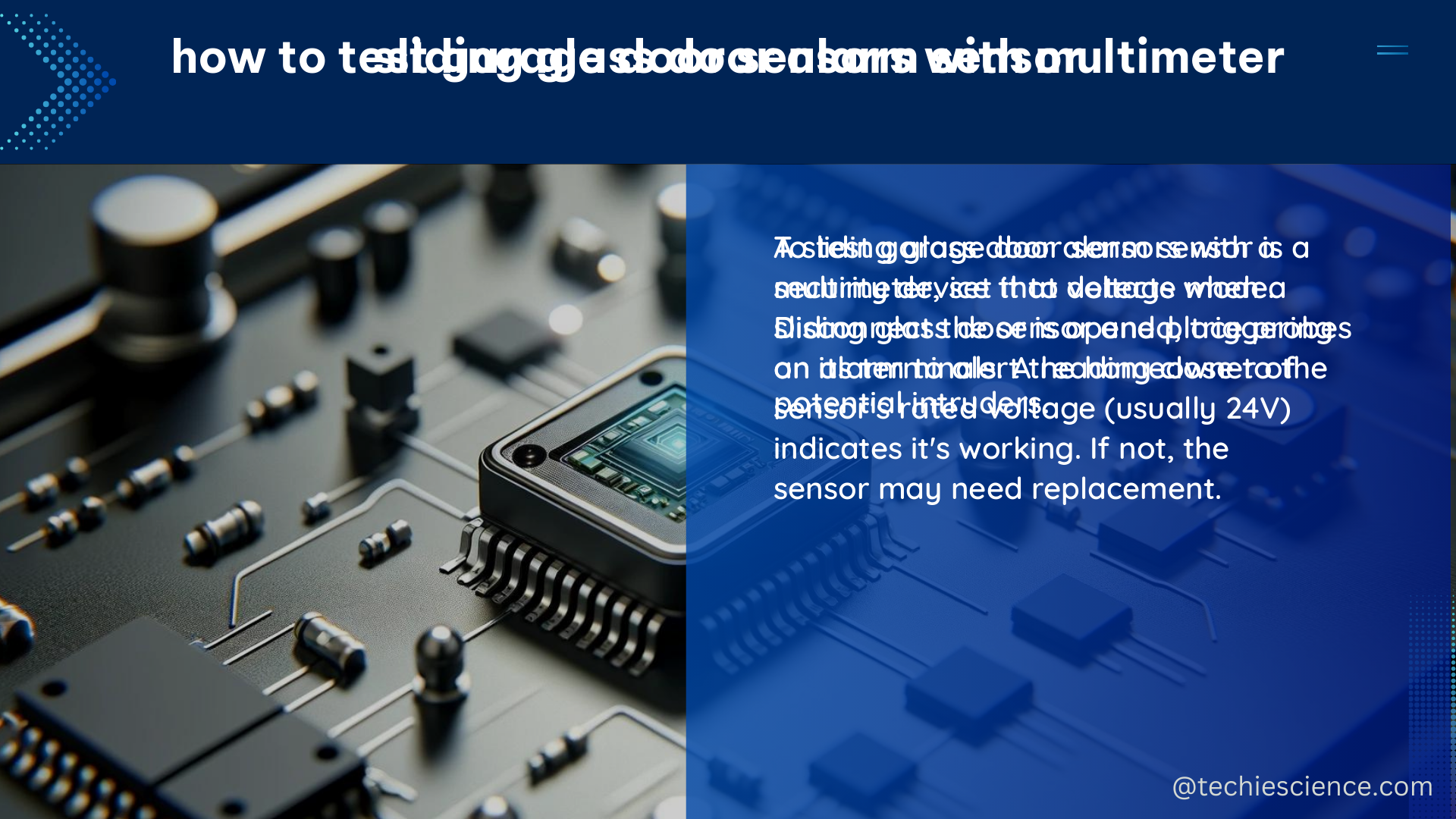A sliding glass door alarm sensor is a crucial security device designed to detect unauthorized entry or motion through a sliding glass door. These sensors utilize advanced technologies, such as infrared, microwave, or magnetic contacts, to monitor the door’s position and movement, triggering an alarm when unusual activity is detected, alerting the homeowner or security system.
Understanding the Technical Specifications
The technical specifications of sliding glass door alarm sensors can vary significantly depending on the manufacturer and model. Let’s dive into the key specifications to consider:
Detection Range
The detection range refers to the distance within which the sensor can detect motion or intrusion. A wider detection range provides better coverage and security. High-end sensors can have a detection range of up to 40 feet (12 meters), ensuring comprehensive monitoring of the sliding glass door area.
Sensitivity Adjustment
The ability to adjust the sensor’s sensitivity is crucial to minimize false alarms and optimize detection accuracy. Advanced sensors often feature multiple sensitivity settings, allowing homeowners to fine-tune the system based on their specific needs and environment.
Power Supply
Sliding glass door alarm sensors can be either battery-powered or hardwired into the home’s electrical system. Battery-powered sensors offer greater flexibility and ease of installation but may require more frequent battery replacements, typically every 6 to 12 months. Hardwired sensors, on the other hand, provide a constant power supply but may require more complex installation.
Communication Protocol
The method by which the sensor communicates with the security system or home automation hub is an essential consideration. Common communication protocols include Wi-Fi, Z-Wave, Zigbee, and Bluetooth. The choice of protocol will depend on the compatibility of your existing security or smart home setup.
Integration Capabilities
The sensor’s ability to integrate with other security devices and home automation systems is crucial for a comprehensive security solution. Look for sensors that can seamlessly connect with your security panel, smart home hub, or mobile app, allowing for centralized monitoring and control.
Pet Immunity
Some advanced sliding glass door alarm sensors can distinguish between human and animal movements, reducing the risk of false alarms caused by pets. This feature is particularly useful for households with furry companions.
Installation Requirements
The complexity and ease of installing the sensor, including any mounting hardware or wiring needed, should be considered. Opt for sensors with straightforward installation instructions and minimal invasive requirements, especially for DIY enthusiasts.
DIY Installation: Step-by-Step Guide

Embarking on a DIY approach to installing a sliding glass door alarm sensor can be a rewarding and cost-effective endeavor. Here’s a step-by-step guide to help you through the process:
-
Choose the Right Sensor: Carefully select a sensor that meets your specific security needs and is compatible with your existing security system or home automation setup. Consider the technical specifications mentioned earlier to ensure the sensor aligns with your requirements.
-
Prepare the Installation Area: Thoroughly clean and prepare the sliding glass door frame and surrounding areas where the sensor will be mounted. Ensure the surfaces are clean, dry, and free of any obstructions.
-
Mount the Sensor: Follow the manufacturer’s instructions for mounting the sensor. This may involve attaching the sensor to the door frame or the sliding door itself, using the provided mounting hardware. Ensure the sensor is securely in place and properly aligned with the door’s movement.
-
Connect the Power Source: Depending on the sensor model, you’ll need to either install batteries or connect the sensor to the home’s electrical system. If using batteries, make sure to insert them correctly and check the battery level periodically.
-
Configure the Sensor: Integrate the sliding glass door alarm sensor with your security system or home automation hub. This may involve pairing the sensor, setting up the communication protocol, and configuring any necessary settings, such as sensitivity adjustments or pet immunity.
-
Test the Sensor: Once the installation and configuration are complete, thoroughly test the sensor to ensure it is functioning correctly. Simulate various scenarios, such as opening and closing the sliding glass door, to verify the sensor’s responsiveness and alarm triggering.
-
Monitor and Maintain: Regularly check the sensor’s status, battery level, and overall performance to ensure it remains in optimal working condition. Address any issues or updates promptly to maintain the effectiveness of your sliding glass door alarm sensor.
By following these steps, you can successfully install a sliding glass door alarm sensor and enhance the security of your home through a DIY approach.
Conclusion
Sliding glass door alarm sensors are a crucial component of a comprehensive home security system. By understanding the technical specifications and following a step-by-step installation guide, you can effectively secure your sliding glass doors and deter potential intruders. Remember to choose the right sensor, follow the manufacturer’s instructions, and regularly maintain the system to ensure its continued reliability and performance.
References
- Frederik Hvilshøj, “What is One-Shot Learning in Computer Vision – Encord”, Encord, https://encord.com/blog/one-shot-learning-guide/
- DOD-HDBK-791 (AM), “Standardization Handbook”, AcqNotes, https://www.acqnotes.com/Attachments/DoD-HDBK-791.pdf
- “Sensor Technology Handbook”, OLLINTEC, http://ollintec.com/fie/sensores/libros/Sensor%20Technology%20Handbook.pdf
- “Transit Security Design Considerations Final Report November 2004”, FTA, https://www.transit.dot.gov/sites/fta.dot.gov/files/docs/ftasesc.pdf
- Lawrence J. Fennelly and Marianna A. Perry, “Effective Physical Security”, Butterworth-Heinemann, 2017.

The lambdageeks.com Core SME Team is a group of experienced subject matter experts from diverse scientific and technical fields including Physics, Chemistry, Technology,Electronics & Electrical Engineering, Automotive, Mechanical Engineering. Our team collaborates to create high-quality, well-researched articles on a wide range of science and technology topics for the lambdageeks.com website.
All Our Senior SME are having more than 7 Years of experience in the respective fields . They are either Working Industry Professionals or assocaited With different Universities. Refer Our Authors Page to get to know About our Core SMEs.